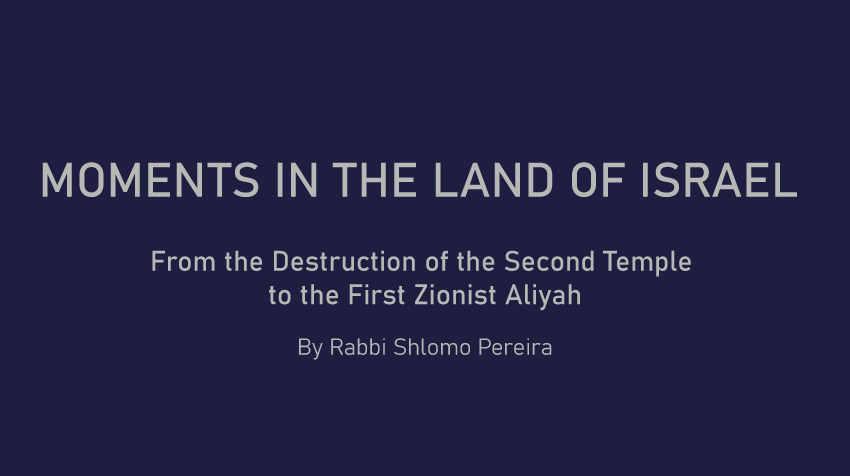Highlighting the permanent Jewish presence and the relevance of Jewish contributions in Eretz Israel as well as the continuous connection between Diaspora Jews and Eretz Israel throughout the centuries between the Destruction of the Second Temple and the onset of modern Zionism, through a series of one-page notes distributed weekly.
DID YOU KNOW THAT... there is some evidence that sacrifices in the Temple Mount might not have completely ended with the Destruction of the Second Temple? From the time of the Destruction of the Temple in 70 until the end of the Bar Kochba Revolt in 135, one of the altars on the Temple Mount remained standing and according to some opinions Pesach sacrifices were regularly offered. In fact, Mishnah Eduyyot 8.6, mentions a tradition that sacrifices could be offered where the altar stood although the Temple was no longer standing. From a Jewish perspective, the continuation of sacrifices was not problematic. The ashes of the Red Heifer, that were necessary for ritual purification before ascending the Temple Mount, were available for a number of generations after the Destruction of the Temple. And in most opinions, the sanctity of the place was not contingent on the Temple standing. The continuation of sacrifices was not problematic from a Roman perspective either. The Romans destroyed the Temple because they regarded it as the political and military headquarters of the revolt. Once the revolt was suppressed there was no longer any impediment to the resumption of Jewish worship on the Temple Mount. Everything changed with the crushing defeat of the Bar Kochba Revolt. In its aftermath, Hadrian ordered that the Temple Mount be leveled and that the remaining altar destroyed. In addition, Jews were prohibited from ascending to the Temple Mount, a prohibition that remained for most of the following eighteen centuries, with the exception of the day of TishaB’Av in early times and couple of brief exceptions in later periods. Regardless, Jews continued to go on the Temple Mount, as is confirmed by many stories in both the Jerusalem and the Babylonian Talmuds and several travel narratives throughout the centuries. A story in the Jerusalem Talmud Pesachim 7.12, concluded c.400 CE, relates that people would take off their shoes before entering the area of the Temple Mount—a practice that is still observed nowadays. According to most halachic authorities, however, without any vestige left of the Temple’s altar it was no longer permissible to offer sacrifices. Paraphrasing the Babylonion Talmud Berachot 32b, even when the gates of prayer were closed, the gates of weeping were not.


































